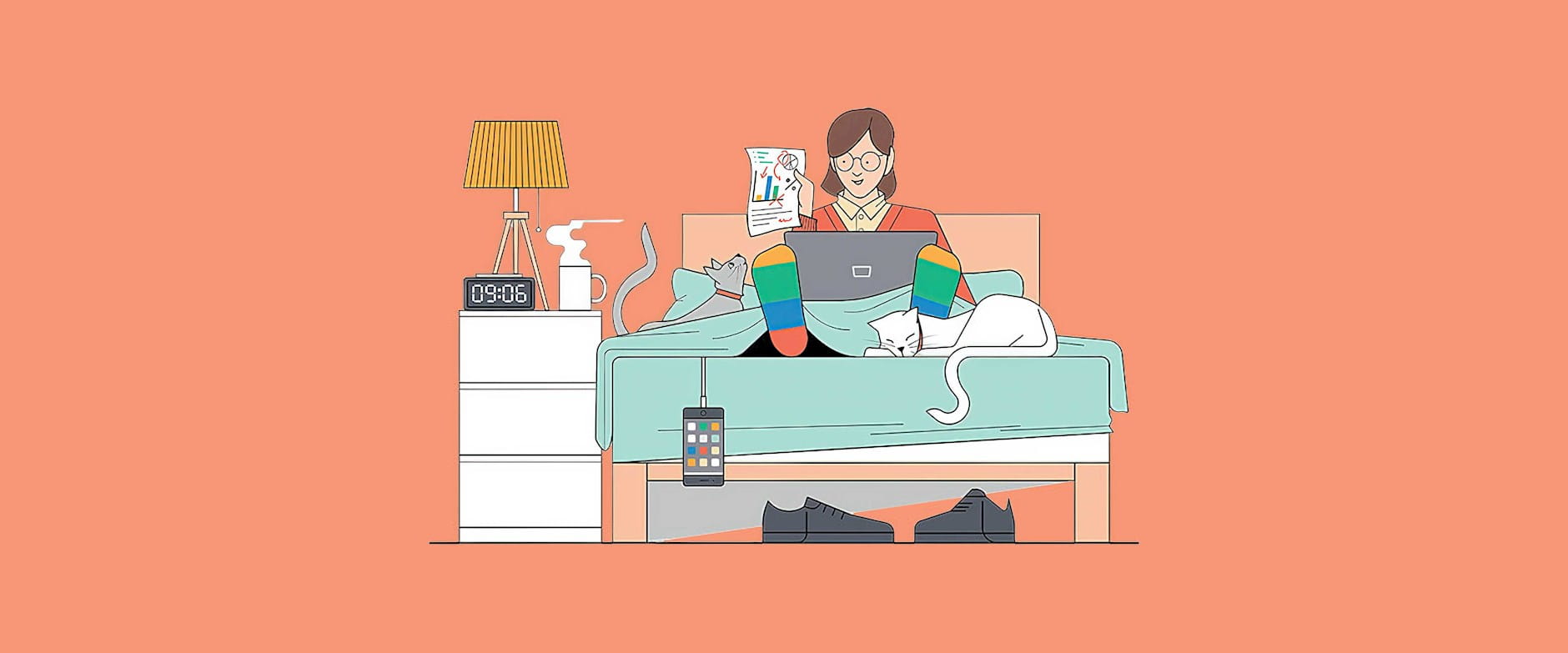Facebook founder and CEO Mark Zuckerberg isn’t your typical office worker. He was No. 3 on the 2020 Forbes list of the richest Americans, with a net worth of $125 billion, give or take. But there’s at least one thing Zuckerberg has in common with many other workers: he seems to like working from home. In an internal memo, which made its way to the Wall Street Journal, as Facebook announced plans to offer increased flexibility to employees, Zuckerberg explained that he would work remotely for at least half the year.
“Working remotely has given me more space for long-term thinking and helped me spend more time with my family, which has made me happier and more productive at work,” Zuckerberg wrote. He has also said that he expects about half of Facebook’s employees to be fully remote within the next decade.
The coronavirus pandemic continues to rage in many countries, and variants are complicating the picture, but in some parts of the world, including the United States, people are desperate for life to return to normal—everywhere but the office. After more than a year at home, some employees are keen to return to their workplaces and colleagues. Many others are less eager to do so, even quitting their jobs to avoid going back. Somewhere between their bedrooms and kitchens, they have established new models of work-life balance they are loath to give up.
This has left some companies trying to recreate their work policies, determining how best to handle a workforce that in many cases is demanding more flexibility. Some, such as Facebook, Twitter, and Spotify, are leaning into remote work. Others, such as JPMorgan Chase and Goldman Sachs, are reverting to the tried-and-true office environment, calling everyone back in. Goldman’s CEO David Solomon, in February, called working from home an “aberration that we’re going to correct as quickly as possible.” And JPMorgan CEO Jamie Dimon said of exclusively remote work: “It doesn’t work for those who want to hustle. It doesn’t work for spontaneous idea generation. It doesn’t work for culture.”
This pivotal feature of pandemic life has accelerated a long-running debate: What do employers and employees lose and gain through remote work? In which setting—the office or the home—are employees more productive? Some research indicates that working from home can boost productivity and that companies offering more flexibility will be best positioned for success. But this giant, forced experiment has only just begun.
An accelerated debate
A persistent sticking point in this debate has been productivity. Back in 2001, a group of researchers from the Human-Computer Interaction Institute at Carnegie Mellon, led by Robert E. Kraut, wrote that “collaboration at a distance remains substantially harder to accomplish than collaboration when members of a work group are collocated.” Two decades later, this statement remains part of today’s discussion.
However, well before Zoom, which came on the scene in 2011, or even Skype, which launched in 2003, the researchers acknowledged some of the potential benefits of remote work, allowing that “dependence on physical proximity imposes substantial costs as well, and may undercut successful collaboration.” For one, they noted, email, answering machines, and computer bulletin boards could help eliminate the inconvenience of organizing in-person meetings with multiple people at the same time.
Two decades later, remote-work technology is far more developed. Data from the US Bureau of Labor Statistics indicate that, even in pre-pandemic 2019, more than 26 million Americans—approximately 16 percent of the total US workforce—worked remotely on an average day. The Pew Research Center put that pre-pandemic number at 20 percent, and in December 2020 reported that 71 percent of workers whose responsibilities allowed them to work from home were doing so all or most of the time.
The sentiment toward and effectiveness of remote work depend on the industry involved. It makes sense that executives working in and promoting social media are comfortable connecting with others online, while those in industries in which deals are typically closed with handshakes in a conference room, or over drinks at dinner, don’t necessarily feel the same. But data indicate that preferences and productivity are shaped by factors beyond a person’s line of work.
The productivity paradigm
Before the COVID-19 pandemic, Stanford’s Nicholas Bloom was bullish on work-from-home trends. His 2015 study, for one—with James Liang, John Roberts, and Zhichun Jenny Ying, all then at Stanford—finds a 13 percent increase in productivity among remotely working call-center employees at a Chinese travel agency.
But in the early days of the pandemic, Bloom was less optimistic about remote work. “We are home working alongside our kids, in unsuitable spaces, with no choice and no in-office days,” Bloom told a Stanford publication in March 2020. “This will create a productivity disaster for firms.”
To test that thesis, Jose Maria Barrero of the Mexico Autonomous Institute of Technology, Bloom, and Chicago Booth’s Steven J. Davis launched a monthly survey of US workers in May 2020, tracking more than 30,000 workers aged 20–64 who earned at least $20,000 per year in 2019.

